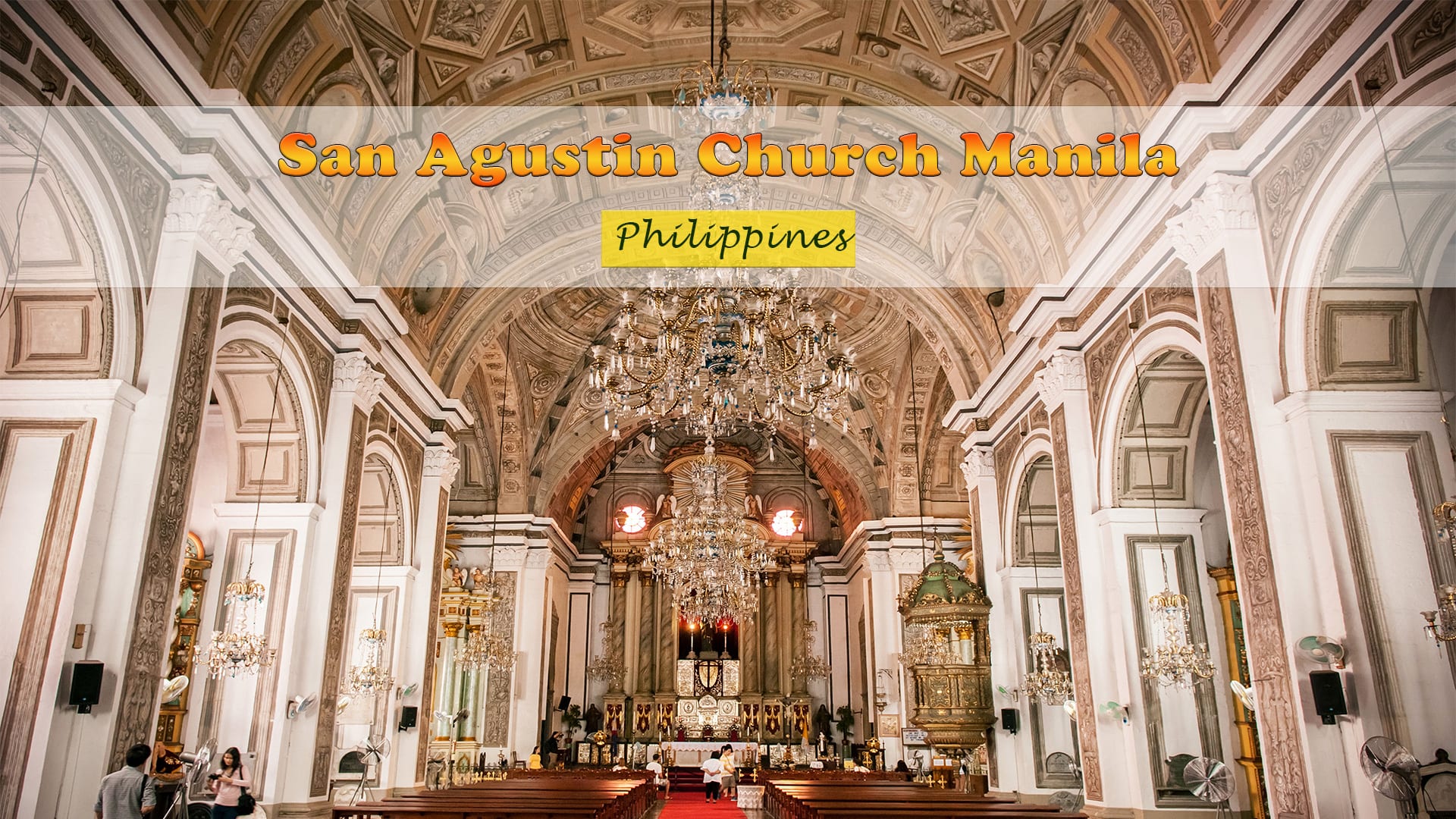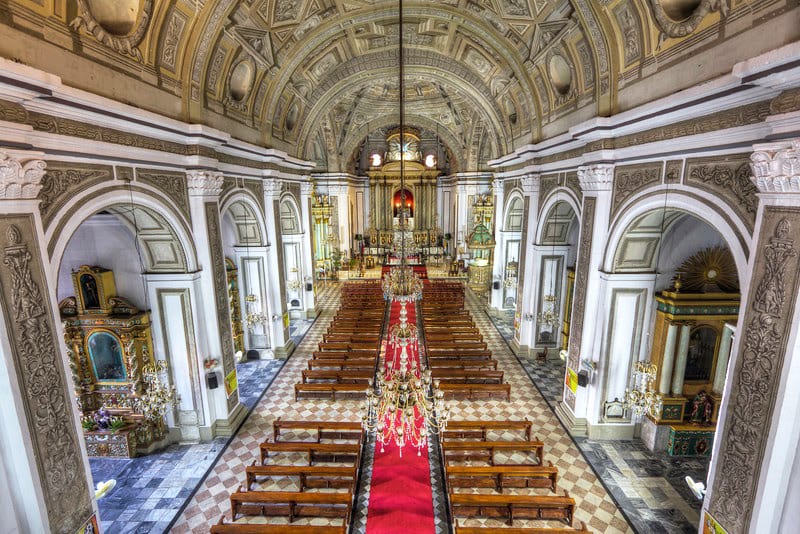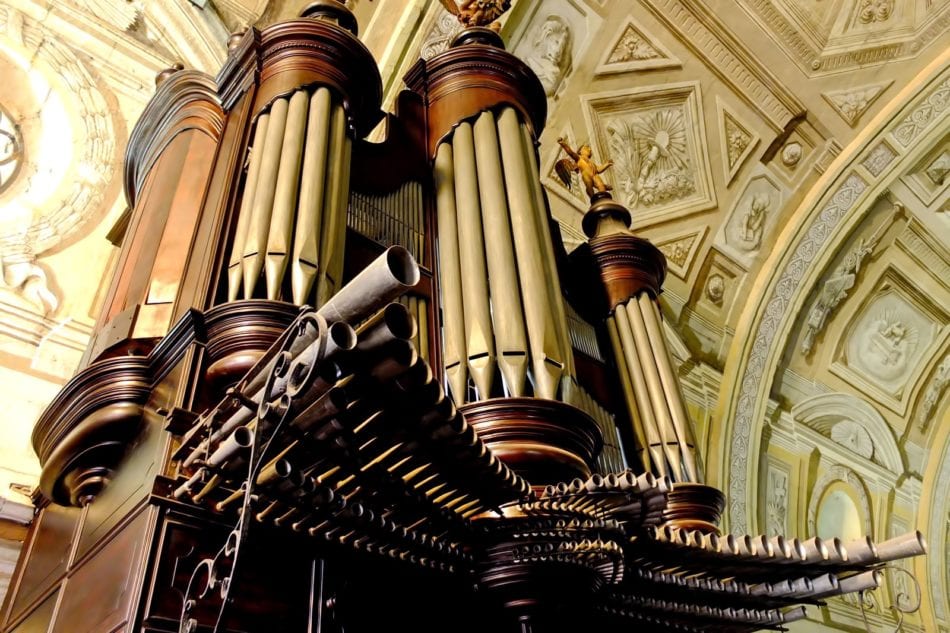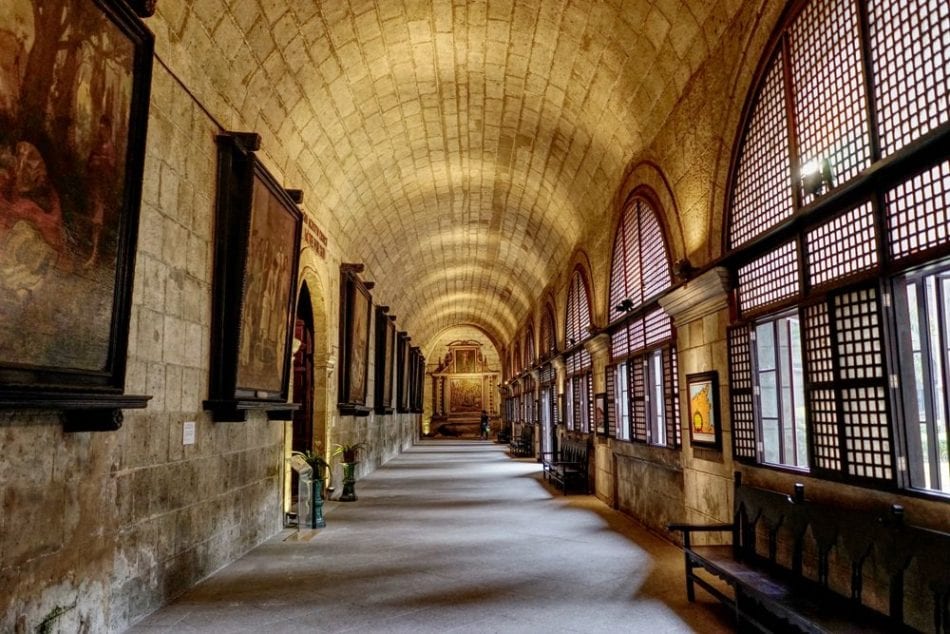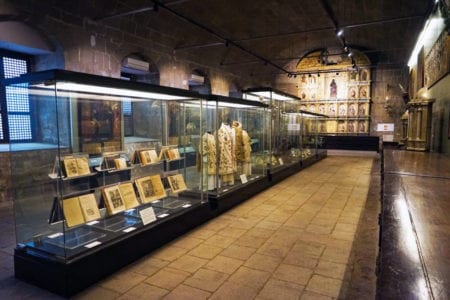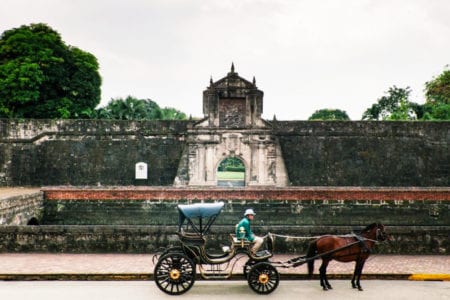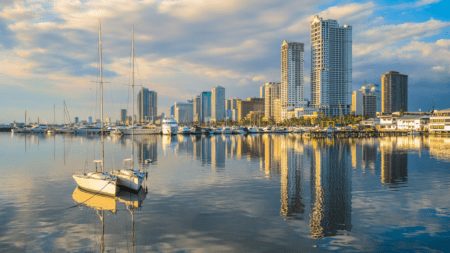San Agustin Church in Manila should be on the itinerary of anyone with an interest in history or architecture. Located inside the historic Walled City of Intramuros, this Roman Catholic Baroque-style church is a UNESCO World Heritage site.
San Agustin Church
Whether you are a deeply religious person, as many Filipinos are, or are a person who just appreciates opulence, San Agustin Church is a wonder to behold. I was in awe of the majesty of this house of God. Do yourself a favor and take a few hours out of your busy schedule to see Filipino history reflected in the walls, pews, and chandeliers of this holy building.
Whether it was luck, fate, or the hand of God, San Agustin Church was the only building left intact after the devastation of the Intramuros in World War 2. Built somewhere between 1587 and 1606, this is the oldest church, to date, in the Philippines. The massive exterior facade can be deceiving as it conceals an ornate interior filled with objects of historical and cultural merit.
In 1993, San Agustin Church was one of four Philippine churches constructed during the Spanish colonial period to be designated as a World Heritage Site by UNESCO, under the collective title Baroque Churches of the Philippines. It was named a National Historic Landmark by the Philippine government in 1976.

How old is the San Agustin Church?
Don’t be fooled by the outside appearance, once you walk through the front doors, you walk into another time and place.
With the Spanish religious master plan being to facilitate and spread the uptake of Catholicism among the Filipino natives, grand churches were built. These grand churches however started from humble beginnings.
As with many other churches of the time, San Agustin Church was made from local materials such as bamboo and nipa. This construction began in 1571. Due to calamities, crusader invasions, and natural disasters by the hand of God, the church had to be rebuilt in 1571, 1575, and 1586. Greatness starts on rocky ground.
Finally, in 1607 the official completion of San Agustin Church was signed, sealed, and delivered. The construction of the church was finally complete.
As of the writing of this article, San Agustin Church is 413 years old, making it the oldest church in the Philippines.
This famous landmark is a guaranteed must-see for anyone who wishes to learn about the rich history of the Catholic Church in the Philippines.
San Agustin Church History
The first San Agustin Church was the first religious structure constructed by the Spaniards on the island of Luzon.
Made of bamboo and nipa, it was completed in 1571 but destroyed by fire in December 1574 during the attempted invasion of Manila by the forces of Limahong.
A second wooden structure built on the same site was destroyed in February 1583 by a fire.
The Augustinians decided to rebuild the church using stone and to construct an adjacent monastery. Construction began in 1586. The monastery was operational by 1604.
San Agustin Church was looted by the British forces who occupied Manila in 1762 during the Seven Years’ War. On 3 June 1863, the strongest earthquake at that time hit Manila leaving widespread destruction to the city, with San Agustin Church the only public building left undamaged. A series of strong earthquakes struck Manila again on 18–20 July 1880.
The church was renovated in 2013, with its colorful facade replaced by a sedate stone-colored one. San Agustin Church is currently administered by the Augustinian friars from the Augustinian Vicariate of the Orient, a circumscription of the Spanish Augustinian Province of the Most Holy Name of Jesus of the Philippines.
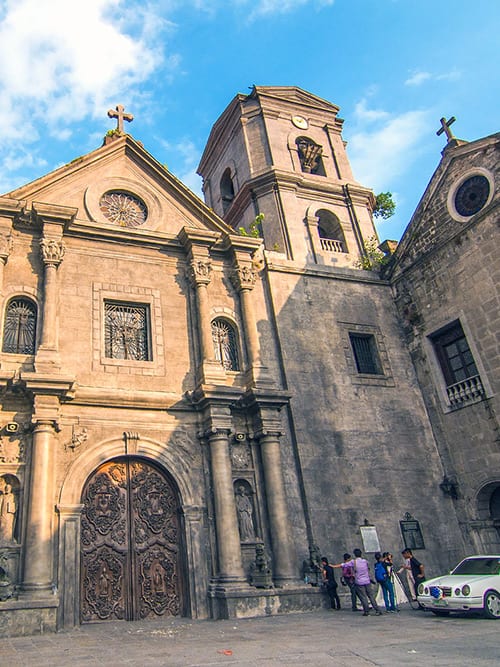
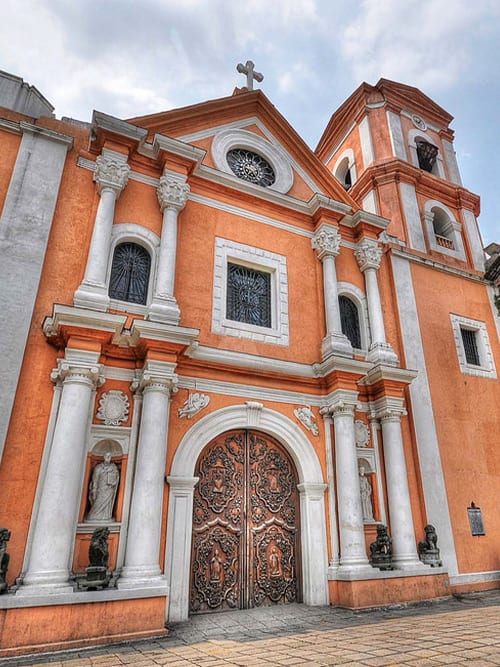
Manila: Full-Day City and Museum Tour
Immerse yourself in the Philippines´ rich cultural past and onwards to its progressive future through its diverse museums. From the old ´walled city´ of Intramuros to the financial district of Makati, this tour is a well-rounded glimpse of our history.
Historical Significance Facts
- The remains of Manila founder, Spanish conqueror Miguel Lopez de Legaspi is buried on the site.
- The site also houses the tombs of several people of historical importance including artists, statemen, and Spanish conquerors.
- Within the sanctuary of the building, the surrender of the Spanish to the Americans was negotiated.
- By the year 1994, the structure was chosen as a UNESCO World Heritage site.
- When the smoke has cleared in World War 2, its monastery was left burned to the ground, The monastery underwent reconstruction afterward and was later renovated and made into a museum for Catholic religious artifacts, treasures, and iconic artworks.
San Agustin Church Artifacts
There are stunning frescoes, the Trompe-l’oeil ceiling, paintings, statues, and various church ornaments, all of which you can appreciate with a background of pipe organ music. If you’re planning to visit the San Agustin Church, it’s worth knowing that it’s a popular wedding venue. While it’s interesting to witness a Filipino wedding, access to the church is restricted during the ceremony.
Note the intricate trompe l’oeil frescos on the vaulted ceiling. Be sure to check out the tropical cloisters as well as the slightly shabby gardens out the back.
San Agustin Church Manila Mass Schedule
- Monday to Friday – 6:30 am, 7:00 am, 5:30 pm
- Saturday – 7:00 am, 5:30 pm (anticipated mass)
- Sunday – 8:00 am (children’s mass), 10:00 am, 6:00 pm
Feast Day: August 28
Address: General Luna St, Manila City, Metro Manila.
Contact Number: (632) 527-2746 / 527-4061
Places near San Agustin Church
- San Agustin Museum is home to a collection of Spanish-era artifacts, furniture, paintings, statues, and other church ornaments.
- Baluarte de San Diego is a bastion in Intramuros, part of the Spanish colonial fortification in Intramuros. It is a fabulous park containing beautiful gardens and historic fort remains in Manila.
- Fort Santiago is the oldest Hispanic stone fortress in the Philippines. There are called kalesa or carriages, old dungeons, an old theater, gardens, and more to keep your eyes and ears busy as you take in all the history. Visitors can explore the dungeons that were used as storage vaults and powder magazines of the Baluarte de Santa Barbara, a stone structure constructed in 1592. During World War II, the dungeons were used by Japanese troops to imprison resistance fighters and political prisoners.
- National Museum of the Philippines. If you’re into history and culture, the National Museum of the Philippines is the perfect place to be. It is home to Juan Luna’s famous Spoliarium— a gigantic painting more than four meters high and seven-and-a-half meters wide, making it the Philippines’ largest painting. What’s even more exciting is that admission is totally free!
- Manila Cathedral provides vivid reminders of change and renewal, especially in this very old location of Manila. The church is visible from many areas within the Intramuros and is very photogenic, especially with the facade of Romanesque arches.
How to get there
- Location: General Luna St, Manila, 1002 Metro Manila, Philippines
- Open: Daily from 8 am to 12 pm and from 1 pm to 6 pm
San Agustin church is located within the walled city of Intramuros at General Luna Street, Manila City. The church is easily accessible upon reaching Intramuros which can be reached by taking the LRT1 and disembarking in Central Terminal station. You can also take the jeep that passes to Manila Cathedral, and you can have a short walk from there.
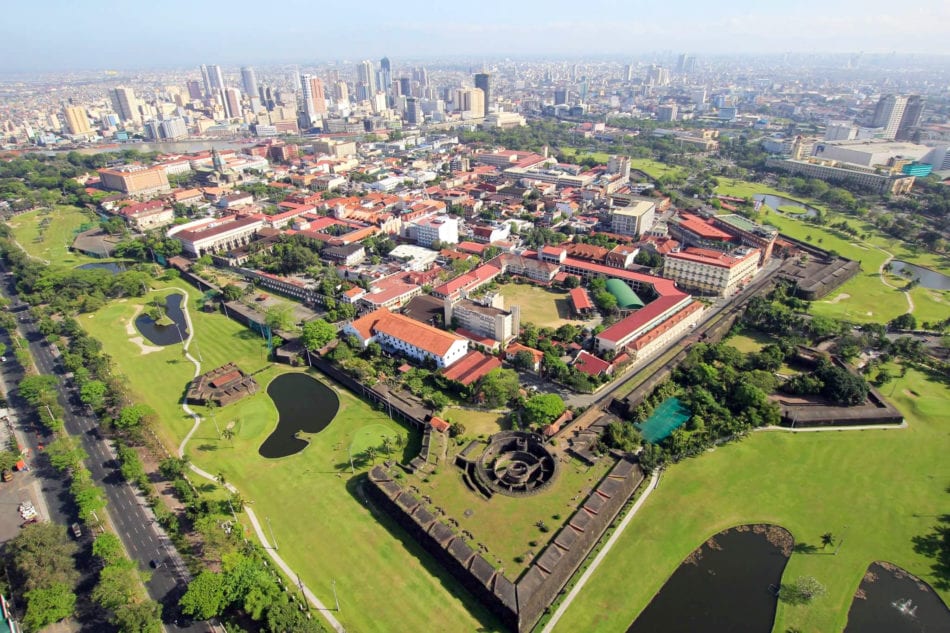
Don’t forget your insurance! You never know when you’ll need it. We suggest getting travel insurance. Which coverage includes medical, trip cancellation, your belongings from theft or damage, baggage, car rental coverage, and much more.

